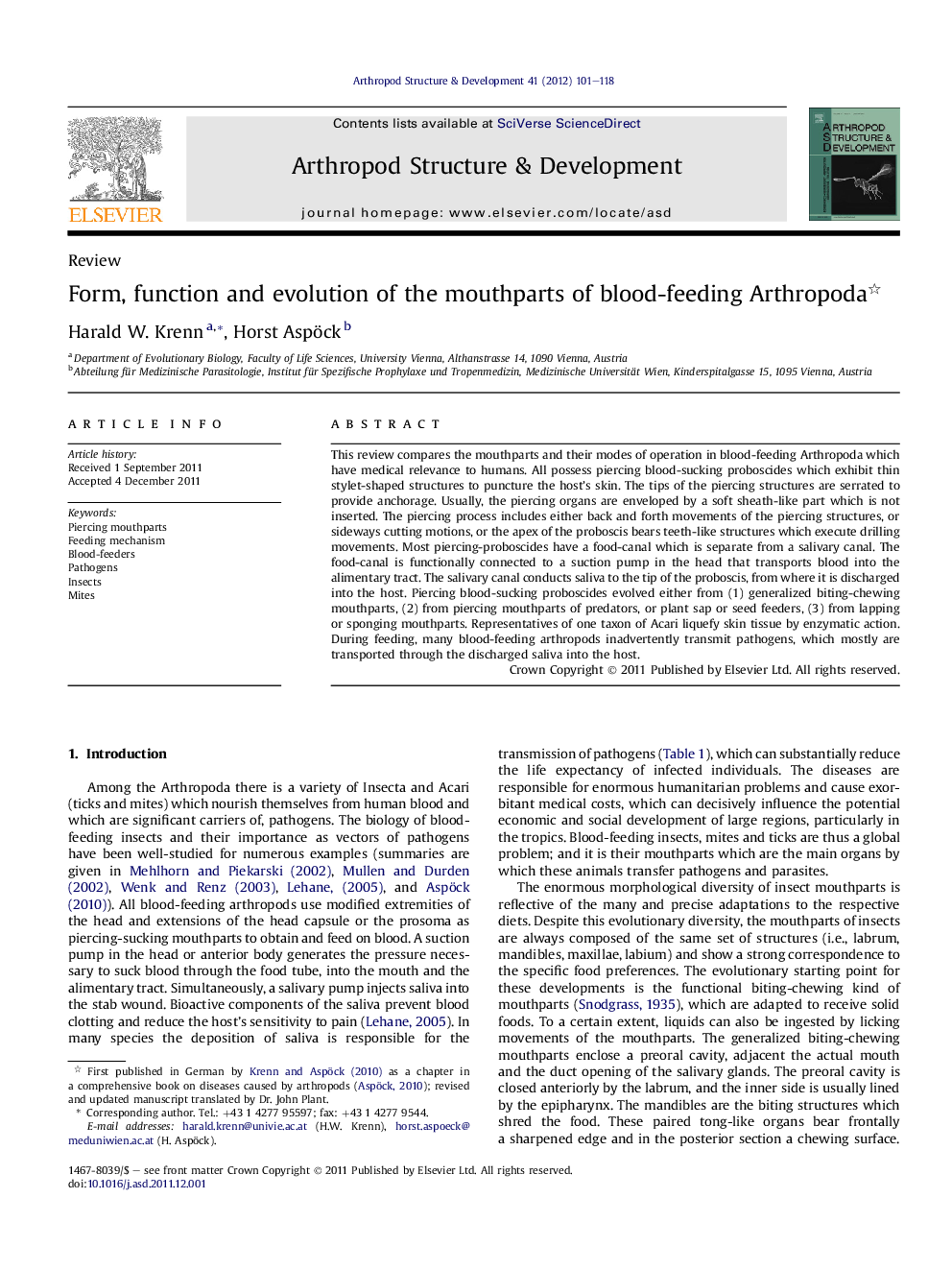| Article ID | Journal | Published Year | Pages | File Type |
|---|---|---|---|---|
| 2778767 | Arthropod Structure & Development | 2012 | 18 Pages |
This review compares the mouthparts and their modes of operation in blood-feeding Arthropoda which have medical relevance to humans. All possess piercing blood-sucking proboscides which exhibit thin stylet-shaped structures to puncture the host's skin. The tips of the piercing structures are serrated to provide anchorage. Usually, the piercing organs are enveloped by a soft sheath-like part which is not inserted. The piercing process includes either back and forth movements of the piercing structures, or sideways cutting motions, or the apex of the proboscis bears teeth-like structures which execute drilling movements. Most piercing-proboscides have a food-canal which is separate from a salivary canal. The food-canal is functionally connected to a suction pump in the head that transports blood into the alimentary tract. The salivary canal conducts saliva to the tip of the proboscis, from where it is discharged into the host. Piercing blood-sucking proboscides evolved either from (1) generalized biting-chewing mouthparts, (2) from piercing mouthparts of predators, or plant sap or seed feeders, (3) from lapping or sponging mouthparts. Representatives of one taxon of Acari liquefy skin tissue by enzymatic action. During feeding, many blood-feeding arthropods inadvertently transmit pathogens, which mostly are transported through the discharged saliva into the host.
► We review the functional morphology of piercing blood-sucking mouthparts in Arthropoda. ► The piercing structures are enveloped by soft parts which are not inserted into the host. ► The blood-sucking proboscis forms a food-canal and a separate salivary duct. ► Piercing mechanisms function like a jigsaw, a scissor or a drill. ► Transmitted pathogens and distribution of diseases are listed.
